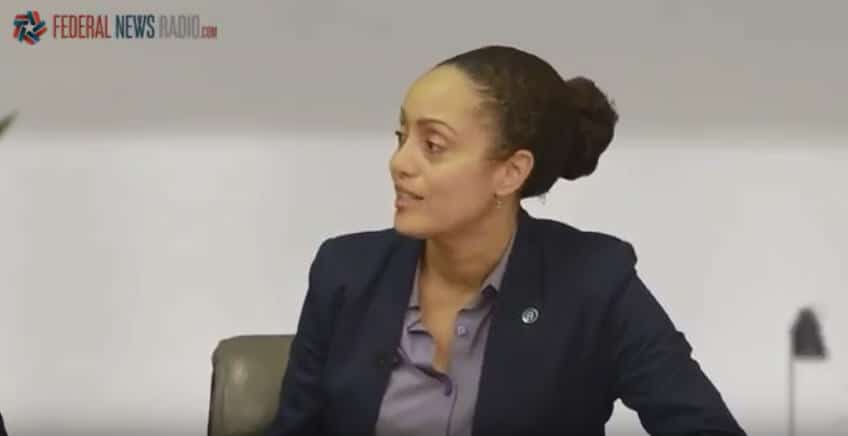Intel community weighs role of open source intelligence amid Ukraine conflict
Intelligence agencies have struggled to define how open source intelligence, like commercial satellite imagery and social media, fits into its broader work.
Intelligence agencies have struggled to define how open source intelligence fits into its broader work, but the wide breadth of publicly available information about the Ukraine conflict, combined with proactive disclosures of classified information, are providing some clarity about OSINT’s role.
During an appearance at the Center for Strategic and International Studies last week, Principal Deputy Director of National Intelligence Stacey Dixon said publicly available satellite imagery, for instance, puts the intelligence community “in a different place” in not being the sole arbiter of information about a foreign conflict like the one in Ukraine.
Commercial satellite imagery helped expose Russia’s build-up of forces prior to the invasion, and since then, such imagery has helped publicly track the conflict’s progression in detail.
“Within the community, I think we have been thinking about open source information and how it actually fits into the intelligence enterprise for quite a while,” Dixon said. “There’s a lot of really useful information out there and so figuring out how do we legally, keeping in mind privacy and civil liberties, how do we bring in the information that’s useful and see how we can complement the classified information we have in terms of being able to provide insights to our customers.”
OSINT represents a rapidly expanding world of social media feeds, commercial satellite imagery, cell phone videos and other internet-derived information that allow professional and amateur analysts alike to investigate events happening around the world without the need for classified information.
But Dixon said the U.S. intelligence analysts bring a known amount of “rigor” to their work, while measuring the quality of outside analysis can be difficult.
“I know the rigor with which our analysts interpret information,” she said. “I don’t know the rigor with which all other analysts interpret information.”
“I’ve seen sometimes others with perhaps less rigor in their analysis make statements and claims that you really can’t tell from that information itself, it may be a logical next step, but our intelligence is based on what we actually see or hear or what we actually measure,” Dixon added.
The IC traditionally defined open source intelligence as foreign newspapers and other media. The various definitions of “OSINT” in the intelligence community have evolved over the years to also capture media from the internet, but they remain vague and vary across agencies, according to a January report from the Center for Strategic and International Studies found
The CSIS report says the intelligence community “has not yet warmed” to OSINT, and is yet to take advantage of artificial intelligence and machine learning tools to make sense of vast amounts of publicly available information.
“For the intelligence community to meet its mission of ‘all-source’ analysis, it cannot afford to ignore a wealth of available data solely because it is unclassified,” the report states. “In a best-case scenario, the IC will lose policymaker attention and trust as they compete with private intelligence. But the worst case scenario is more problematic: U.S. adversaries are pursuing this same technology aggressively and outstripping IC capabilities.”
Lauren Zabierek, a former intelligence officer and executive director of the Cyber Project at Harvard Kennedy School’s Belfer Center, said the CSIS report provides a good overview of the myriad policy, legal and cultural challenges that can constrain the use of OSINT within the intelligence community.
“Analysts want to do a good job, they want to be able to use information in their analyses,” Zabierek said on “Inside the IC.” “But there are a lot of different issues that I think the community and even Congress really need to address.”
She said Congress could improve how it sets budgets and requirements to advance the role of OSINT, while both Congress and the executive branch need to work through legal issues governing how analysts can use publicly available information, so they can do so while ensuring privacy and civil liberties are protected.
Maria Robson, program coordinator of the Intelligence Project at the Belfer Center, studies how the private sector has increasingly built up OSINT tradecraft over the last two decades. She said while some people retain their security clearances when they move to the private sector, the clearances aren’t providing “nuggets of gold” compared to OSINT.
“A lot of it is just the power of open source information in a way that didn’t exist 10 or 20 years ago,” Robson said on “Inside the IC.” “The distinction that we see here with public and private is the extent of the training on open source intelligence analysis that exists in the private sector that doesn’t necessarily exist in the government because of the access to classified information. And so one of the things I think we need to see is learning from those private sector models in terms of how to train analysts and how to effectively take advantage of all the open source intelligence available.”
Copyright © 2025 Federal News Network. All rights reserved. This website is not intended for users located within the European Economic Area.
Follow @jdoubledayWFED






